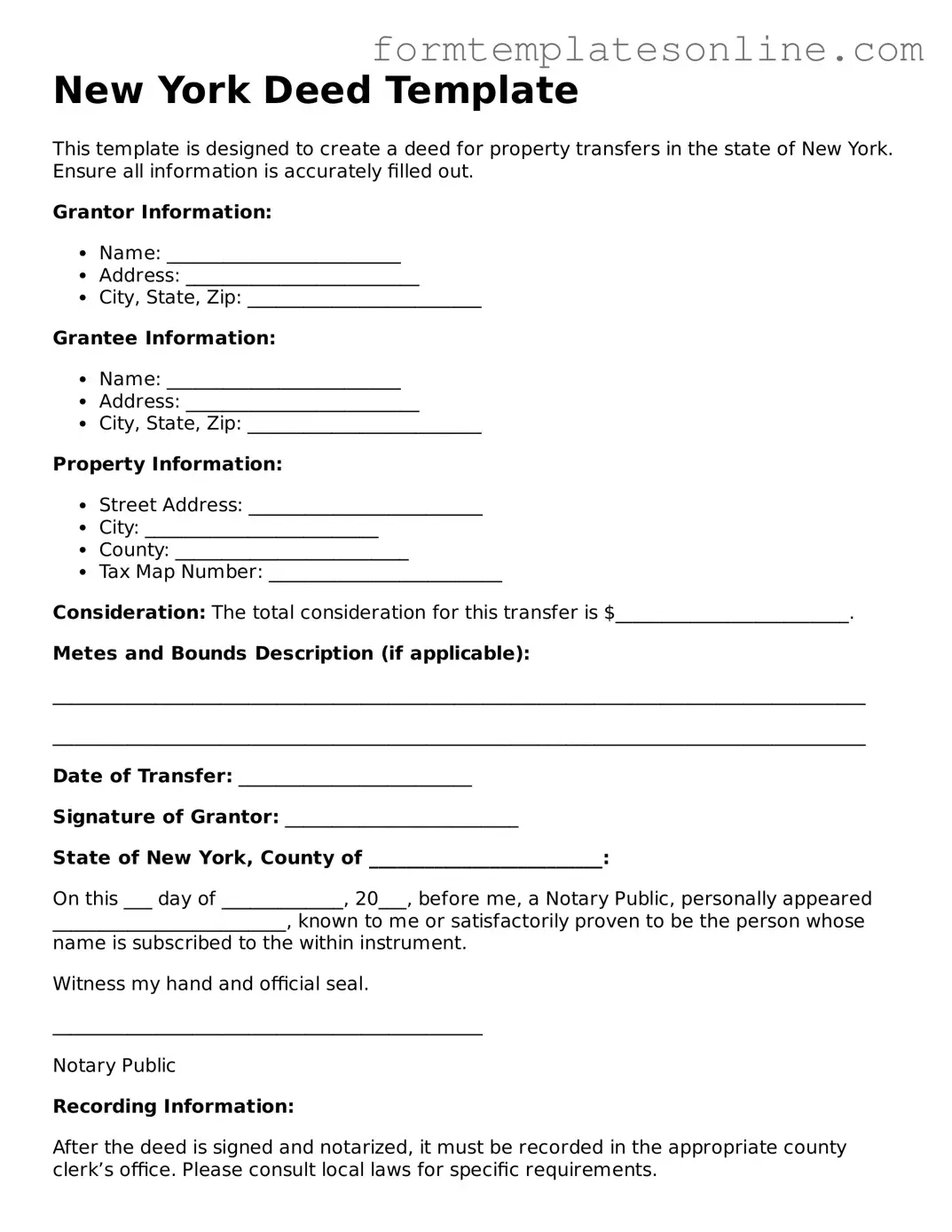New York Deed Template
This template is designed to create a deed for property transfers in the state of New York. Ensure all information is accurately filled out.
Grantor Information:
- Name: _________________________
- Address: _________________________
- City, State, Zip: _________________________
Grantee Information:
- Name: _________________________
- Address: _________________________
- City, State, Zip: _________________________
Property Information:
- Street Address: _________________________
- City: _________________________
- County: _________________________
- Tax Map Number: _________________________
Consideration: The total consideration for this transfer is $_________________________.
Metes and Bounds Description (if applicable):
_______________________________________________________________________________________
_______________________________________________________________________________________
Date of Transfer: _________________________
Signature of Grantor: _________________________
State of New York, County of _________________________:
On this ___ day of _____________, 20___, before me, a Notary Public, personally appeared _________________________, known to me or satisfactorily proven to be the person whose name is subscribed to the within instrument.
Witness my hand and official seal.
______________________________________________
Notary Public
Recording Information:
After the deed is signed and notarized, it must be recorded in the appropriate county clerk’s office. Please consult local laws for specific requirements.
